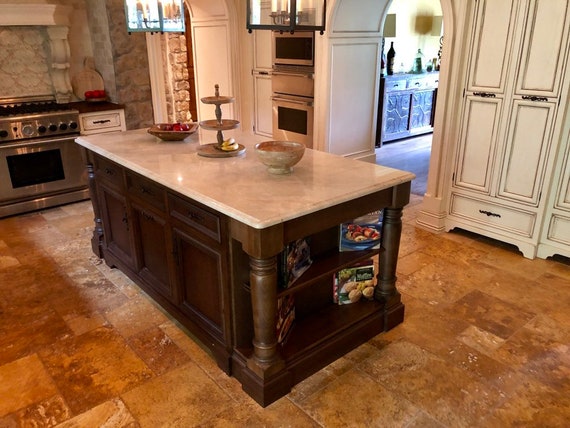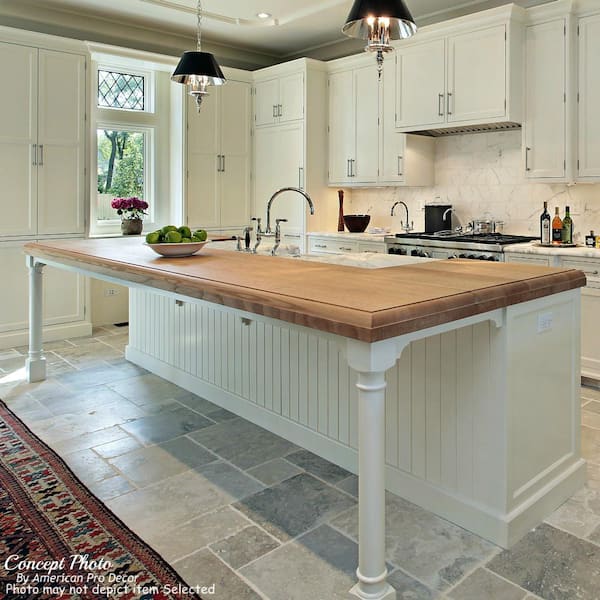How to Incorporate a Kitchen Island Leg into Your Kitchen Remodel
How to Incorporate a Kitchen Island Leg into Your Kitchen Remodel
Blog Article
Exploring the Important Attributes of a Cooking Area Island Leg for Your Culinary Area
The kitchen area island serves as a central center in any kind of cooking area, and the choice of leg design is critical in enhancing both its functionality and aesthetic charm. Comprehending the vital functions of kitchen island legs-- including material options, design styles, and stability variables-- can dramatically affect the general experience within the cooking area. As we explore these components, we will uncover just how thoughtful customization and accessories can raise your kitchen island from a simple utility to a striking focal point. What specific factors to consider should be prioritized to accomplish this balance?
Significance of Cooking Area Island Legs
Kitchen island legs play a vital duty in both the functionality and aesthetic appeals of a cooking area space. They not only support the weight of the island yet also improve the total style, adding to the kitchen's visual allure. The option of legs can determine the design of the cooking area, be it modern, conventional, or rustic.
Functionally, durable and effectively designed legs guarantee stability, permitting the risk-free use the island for different tasks such as cooking, dining, or amusing. Strong legs stop shifting and tottering, providing a reputable surface area for everyday activities.
Additionally, the elevation and placement of the legs can influence the comfort level for those seated at the island. A well-considered elevation can suit bar feceses or chairs, advertising an inviting atmosphere for events.
In addition to these practical considerations, cooking area island legs can offer as a focal factor in the space (kitchen island leg). Ornamental or distinctively developed legs can elevate the layout visual, making the island a centerpiece. Thus, selecting the appropriate cooking area island legs is necessary for stabilizing form and function in any kind of culinary space
Product Options for Legs
Picking the suitable material for cooking area island legs substantially affects both sturdiness and design. Usual product options consist of stone, steel, and wood, each offering distinct benefits.
Wood is a preferred option due to its heat and flexibility. It can be conveniently personalized to match various style styles, from rustic to modern. Hardwoods like oak and maple give exceptional strength and durability, while softer woods can be a lot more susceptible to tear and use.
Metal legs are preferred for their sleek, modern-day aesthetic. kitchen island leg. Stainless-steel and light weight aluminum are not only durable yet likewise immune to rust and corrosion, making them perfect for cooking area environments. They can produce an industrial look and are commonly available in different coatings to complement various other kitchen aspects
Rock legs, such as granite or marble, include an element of high-end and security. While heavier than other products, they supply extraordinary durability and can stand up to substantial weight. However, they may need added assistance to ensure appropriate equilibrium.
Ultimately, the selection of material should straighten with both practical requirements and the total style vision of the cooking area area, guaranteeing that the island legs enhance both energy and aesthetic appeals.
Design Designs to Think About
What layout styles should be thought about when choosing legs for a cooking area island? The choice of leg design considerably affects the general visual of your culinary room. For a contemporary cooking area, sleek and minimalistic leg designs, such as stainless-steel or geometric forms, can enhance the modern-day appeal, offering a tidy and minimalist appearance.
In contrast, standard kitchens gain from classic styles such as transformed or sculpted wooden legs, which include warmth and character. These alternatives frequently include detailed details that match classic furnishings. For a rustic atmosphere, take into consideration legs made from reclaimed wood or functioned iron, which bring a natural, natural quality to the area.
If you lean in the direction of a commercial theme, robust metal legs with a troubled coating might be perfect, supplying an edgy yet innovative touch. Additionally, farmhouse style kitchen areas can integrate beefy legs that stimulate a feeling of sturdiness and homeliness.

Elevation and Stability Aspects
The height and stability of a cooking area island are crucial elements that directly affect its capability and customer experience. An ideal kitchen island leg must give sufficient height to fit a range of jobs, from food preparation to casual dining.
Stability is equally essential, particularly as kitchen islands typically act as prime focus in culinary atmospheres. A steady leg style reduces wobbling and shifting, which can bring about crashes or discomfort throughout use. Materials such as strong timber, steel, or a combination thereof are typically employed to achieve the necessary sturdiness. Furthermore, the leg's attachment to the island's base have to be safe and secure, ensuring long life and strength versus the wear and tear of daily use.
Personalization and Accessories
Customization alternatives and devices for kitchen area island legs can significantly boost both the aesthetic allure and performance of the space. Home owners can select from a variety of products, including metal, stone, and timber, enabling for seamless integration with existing kitchen area decoration. The choice of coating-- be it a natural discolor, paint, or powder finish-- more individualizes the look, guaranteeing that the island matches the total design motif.
Along with product and why not look here coating, property owners might additionally explore the consolidation of devices such as attractive braces, adjustable feet, or integrated shelving. Brackets can use added assistance while contributing to a contemporary or rustic visual. Flexible feet are particularly great site useful for unequal floor covering, making certain the island remains stable and level, which is important for both safety and security and usability.

Final Thought
In final thought, kitchen area island legs serve an important duty in supplying security and improving the general visual of the cooking area. Personalization options and accessories can elevate the kitchen island, making it a distinctive focal factor within the home.
The cooking area island offers as a central hub in any cooking area, and the option of leg style is pivotal in enhancing both its capability and aesthetic charm. Understanding the essential features of cooking area island legs-- including material alternatives, style styles, and stability factors-- can significantly influence the general experience within the kitchen.Cooking area island you could look here legs play a critical duty in both the performance and appearances of a kitchen area area.What layout styles should be taken into consideration when selecting legs for a kitchen island?In verdict, kitchen area island legs serve an essential function in providing security and improving the total aesthetic of the cooking area.
Report this page